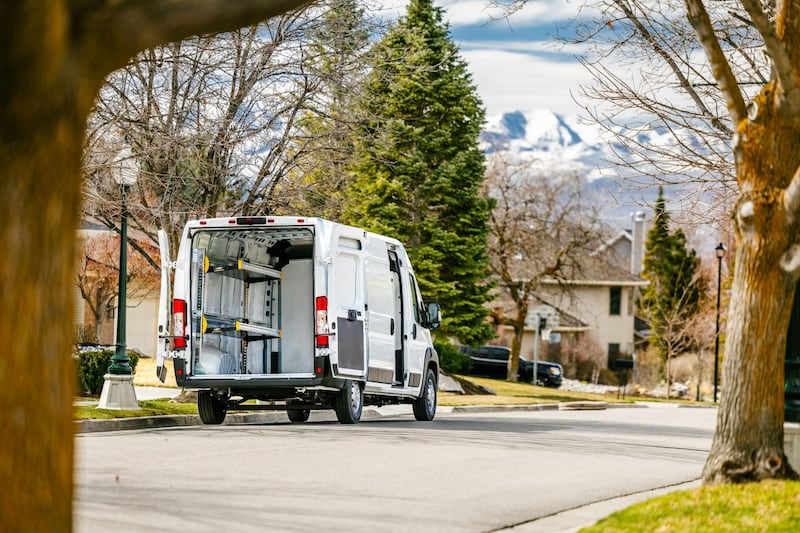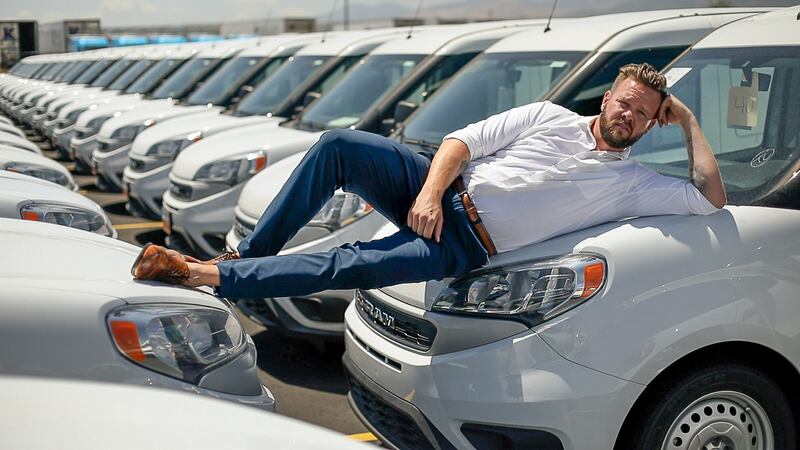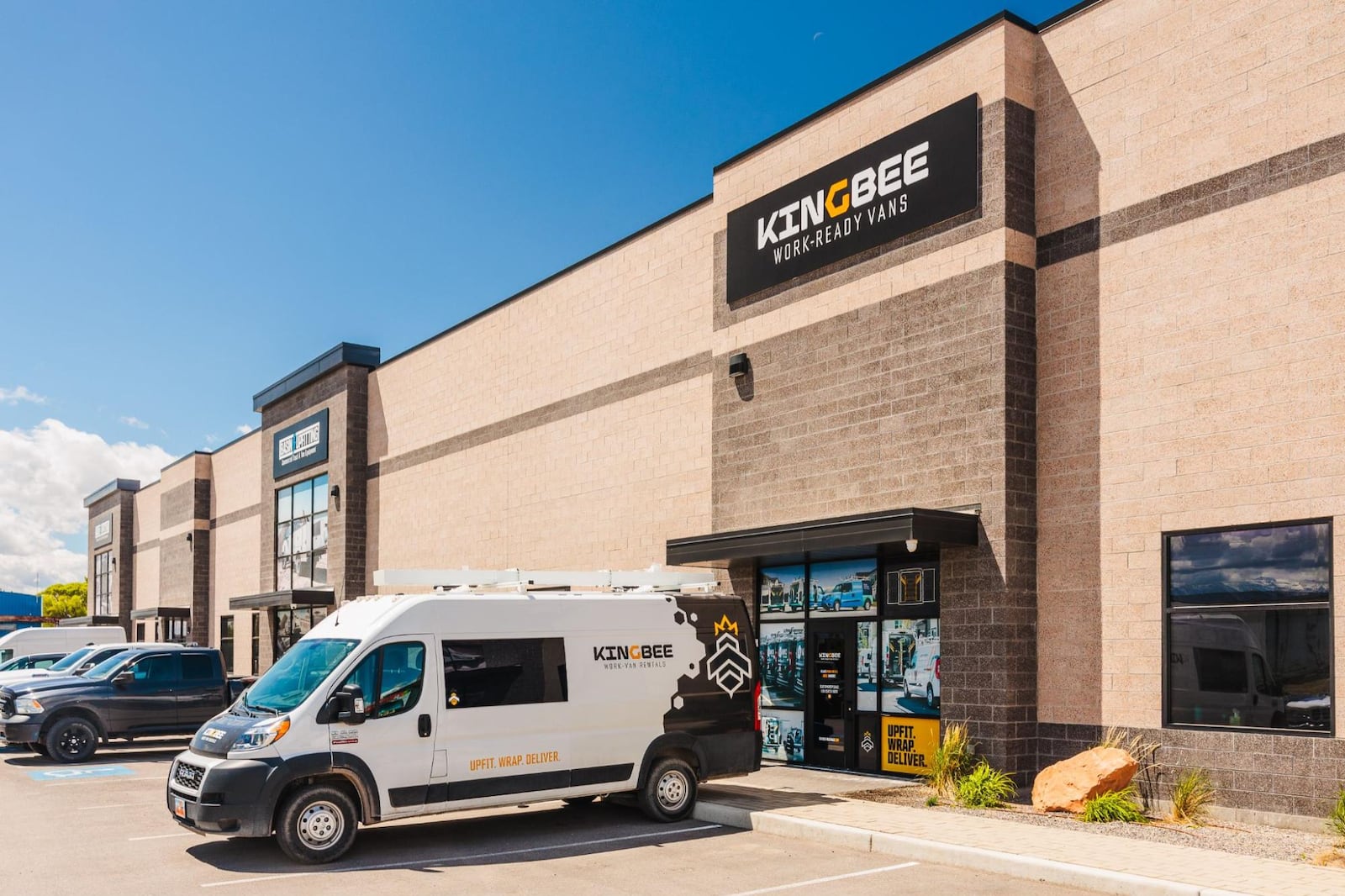My road to entrepreneurship began as early as when my twin brother and I shared a crib. Dave was the fussier, more demanding child who would cry until he got our mom’s attention. Later, I realized that being passive in those situations left me feeling a lack of control.
This feeling persisted into college when I peddled lawn aeration and window cleaning door-to-door to pay for tuition. For whatever reason, working these jobs did not make me feel like I was in control of my circumstances, despite having a firm belief in a positive outcome.
From a young age, I learned that being in charge meant taking responsibility for failure. Many people start a business with the naive thought that they’re going to make a bunch of money, be able to go on vacation whenever they want, etc., but that’s just not the case. In reality, the CEO is responsible for the most pernicious problems within a business, focusing all their time and energy on the problems nobody else can solve.
Natural gas beginnings
The first automotive business Dave and I got into was converting vehicles to natural gas. Frankly, I’m not a car person, so it’s funny that the bulk of my career has dealt with vehicles. I don’t see cars on the road and think, “Wow, that’s cool.” I’m more of a utilitarian who looks for the most efficient vehicle. Dave is much more of a tinkerer, and I’m a problem solver.
We started the natural gas business because gasoline prices were high. Dave was experimenting with converting vehicles to natural gas, and at the time, I was playing in a band — I bought a tour van to convert to natural gas. As a broke musician, I thought it’d be a great idea to cut fuel expenses so the tour would cost half as much. What I didn’t realize is it’d be one the sketchiest things I’ve ever done.
Imagine four dudes riding in a cramped van with an old VCR and TV in the center and then two expired compressed natural gas (CNG) tanks in the back. CNG doesn’t liquify under pressure like propane does — it compresses. In order to get enough natural gas, you have to compress the tanks to around 3,600 PSI. That’s a bomb! We basically drove around the West Coast with two bombs in our backseat.
What fascinated me about natural gas conversion was the problems it solved. Gas prices were about $4/gallon, which was quite high for 2012, and there was a very clear opportunity to convert vehicles to cleaner fuel. One thing that made Dave and I successful as young entrepreneurs was our ability to focus on the problems right in front of us instead of being too fixated on the big idea. That way, if at any point it made sense to pivot, we could.
Just as our natural gas conversion business was getting off the ground, we received an order for 70 vans — the largest order we’d ever got. As we were converting them to natural gas, the fleet manager called and asked if we could also do shelves. We said sure, no problem. We hopped online, found some shelves from Kargo Master, marked them up 20 percent, sent the quote, and the customer accepted right away. We thought, “We’re making more money installing shelving! Plus, it’s much easier, and there are far fewer complications than swapping out fuel systems and engine control modules.”
We did some research and found there was only one other shelving upfitter in the market. We figured there must be some customers who were unhappy about the lack of options. Through all this, we kept thinking there was a real opportunity here and one that we could do well at.
We contacted Kargo Master to see if we could buy directly from them. They gave us some guidance about which products and to whom we should sell. At the time, Kargo Master was selling maybe $10-15,000 worth of product in Utah. Within the first year, we did around $150,000 in purchasing from them. By the next year, we were at half a million in purchasing.
The nitty gritty
The reality in business is that, at some point, you need to borrow money. Up until then, we were bootstrapping everything, and our revenue model was to sell just enough to keep paying for stuff. I realized that I needed to figure out the financing side, even if it meant taking on debt.
Operating a business involves taking capital and sweat and trying to maximize your return. If you don’t already have capital, there are mechanisms set up — such as an SBA — to get your initial capital. Then, once you deploy that capital and turn it into more money, you can reinvest and grow.
Most of my business knowledge and experience really came from digging in and figuring it out. What tends to interest me is a problem that needs to be solved. Good entrepreneurs have a vision, but the best ones are able to focus on the problem right in front of them and chip away until they can get to the next place. We quickly found ourselves needing investments to grow because we couldn’t keep operating hand-to-mouth. If we wanted to buy an $80,000 truckload of equipment, we weren’t really in a position to both pay ourselves and buy that equipment.

First, we went to a small community bank — in my opinion, they’re more personal and interested in the success of your business. We set up a depository account and asked what we needed to apply for an SBA loan, which was financials and projections. They wanted to know what the business would look like in three years and how we could go from, say, $500,000 in revenue to $5 million over the course of three to five years.
Early money mistakes
In the early stages of building this business, we desperately needed accounting. Here’s a quick story about an honest mistake: When learning how to run the books, I wasn’t aware of what’s called GAAP: generally accepted accounting principles. We would get deals and create an invoice to mark the equipment. I had no idea that I actually needed to get the work done before I could invoice it! In fairness, our inventory management system wouldn’t pull the equipment unless we invoiced it, and I wanted to make sure we had the equipment in time to complete the job.
My error resulted in a massive accounts receivable, which is used as your borrowing base against which the bank is willing to lend. We were able to borrow way more money than we should have, which helped the business grow.
It was an honest mistake, but man, it got us into some trouble. There’s a reason why these mechanisms are put in place by people much smarter than me. For a while, we were really struggling to service our debt because we didn’t follow the procedure that was set in place.
Thankfully, I’ve learned from my mistakes, and thank goodness they weren’t business-ending mistakes. Jeff Bezos has a methodology for making decisions: If it’s reversible, quickly do it yourself, and if it’s irreversible, thoughtfully take your time and involve other people. In my case, I’m grateful to have been able to reverse some of my mistakes.
The birth of Kingbee
After our first few years of installing van equipment, we realized we couldn’t scale the business with shelving and racks alone, so we got into truck bodies. Though it was a lot more complicated, we experienced double-digit growth year-over-year for about 10 years straight. Wasatch Fleet Service — now known as Basin Upfitting — grew from about $250,000 in revenue in 2014 to $20 million in regional revenue by 2022.
Growing Wasatch Fleet Service was incredibly thrilling, but I was looking for ways to take it to the next level. We expanded to a location in Boise, but that was a difficult process I didn’t want to do again (I have to give credit to Dave for tackling most of that). I was thinking about how we could solve a bigger problem for fleets. We already had the upfitting shop, and we had opened a wrap shop because customers wanted branded vehicles, but fleets around the country were still struggling to get vehicles in service quickly enough.
At the end of 2020, I had lunch with the founder of a truck rental company. He laid out the economic model of the renting business, and I thought the same thing could apply to cargo vans. At the time, there was crazy high demand and no supply anywhere. I set up a fleet code and talked the ears off of some higher-ups at RAM. By sheer luck, I was able to secure an order for my first 100 cargo vans. Thus, Kingbee was born.
We positioned ourselves to solve a huge problem in fleets: If you’re an HVAC, plumbing, solar, last-mile delivery company or any business with a fleet, nobody can provide work-ready cargo vans quickly enough. Companies are either factory-ordering new vehicles or buying from dealers. Then, the vehicles have to go through an upfit and signage process, resulting in a system that can take 8-12 months.
Kingbee exists to disrupt this archaic process of slow vehicle availability and provide vehicles to companies as a way of filling the gap between waiting for factory-ordered vehicles to arrive and needing vehicles now. In two to four weeks, businesses can receive brand-new vans that are upfitted, wrapped and delivered to any job site around the country.
Early inspiration and finding motivation
I’ve always had great resources: a father in-law who’s been successful in life and a father who built a great business. I never really asked them for money, but I’d always ask, “How do I do this? Who do I talk to?”
My dad is incredibly intelligent and humble. He’s self-made in the sense that he had to put himself through business school and learn everything himself. Early in his career, he developed the first electronic logging device for semi trucks. He was always ahead of the curve of creating products that the industry needed, and I learned so much from him. Eventually, however, I wanted to do things my own way, and he was very supportive of that. He’s always cheered me on to be successful.
The two things that ultimately drive me in life are meaningful relationships and meaningful work — growing a business and helping new employees find opportunities, reach their potential and learn from the things that I’ve done. Secondary to that is the reward I feel from seeing everything we can accomplish as a group. I show up to the office between 6:30 and 7:00 a.m. every morning before everyone else, not because I’m the hardest worker but because I love this.


